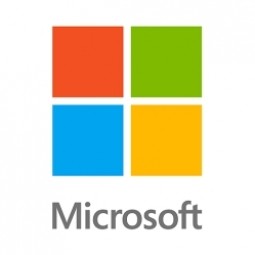Case Studies.
Add Case Study
Our Case Study database tracks 18,927 case studies in the global enterprise technology ecosystem.
Filters allow you to explore case studies quickly and efficiently.
Download Excel
Filters
-
(4)
- (2)
- (1)
- (1)
- View all
-
(1)
- (1)
-
(1)
- (1)
-
(1)
- (1)
- (1)
- (1)
- (1)
- (1)
- (1)
- (1)
- (5)
Selected Filters

|
HEINEKEN Uses the Cloud to Reach 10.5 Million Consumers
For 2012 campaign, the Bond promotion, it planned to launch the campaign at the same time everywhere on the planet. That created unprecedented challenges for HEINEKEN—nowhere more so than in its technology operation. The primary digital content for the campaign was a 100-megabyte movie that had to play flawlessly for millions of viewers worldwide. After all, Bond never fails. No one was going to tolerate a technology failure that might bruise his brand.Previously, HEINEKEN had supported digital media at its outsourced datacenter. But that datacenter lacked the computing resources HEINEKEN needed, and building them—especially to support peak traffic that would total millions of simultaneous hits—would have been both time-consuming and expensive. Nor would it have provided the geographic reach that HEINEKEN needed to minimize latency worldwide.
|
|

|
SML Intelligent Inventory Solutions
SML Intelligent Inventory's customers, some retail and supply chain businesses wanted a cost-efficient way to improve their inventory management so that they can increase their revenue.
|
|

|
GE Healthcare Delivers Core Customer Solutions on the Microsoft Cloud
Two of the company’s businesses—GE Healthcare IT and GE Healthcare Global Services—sought to provide customers with more flexible, yet secure cloud solutions. GE Healthcare IT software and services for Integrated Care create actionable insight across the healthcare system and the care pathway, enabling better clinical and financial outcomes. Healthcare Global Services help health systems manage their operational resources to deliver high quality care safely, efficiently, and affordably. Both business groups knew that while healthcare providers worldwide need better insight and control over data to both improve efficiency and improve clinical care, they must also protect patient information and meet increasingly challenging regulatory requirements Moreover, the company sought to meet its goals without investing additional time and money in on-premises infrastructure.In the United States, GE Healthcare sought to simplify Meaningful Use (MU) reporting to help facilitate the MU attestation required to qualify for incentives from programs established through the Health Information Technology for Economic and Clinical Health Act (HITECH Act). Customers in other countries also have compliance needs, and GE Healthcare wanted a solution that it could easily adapt to a wide range of privacy and security requirements.
|
|

|
French grocery chain halves inventory processing time
Chronodrive is a drive-through grocery service in France: customers shop online and drive to neighborhood pickup points where their purchases are loaded into their cars. With more than 60 grocery stores in France, two in Italy, and more on the way, Chronodrive needs up-to-the-minute knowledge of what’s selling in each store so that it can order the right inventory for the next day. To stay agile, competitive, and operationally lean in a highly competitive and fast-growing market, Chronodrive migrated its entire on-premises datacenter to the cloud in late 2014, with most workloads moving to Microsoft Azure. Azure is a public cloud environment that provides compute, storage, networking, and other services for creating and hosting applications in Microsoft datacenters.
|
|

|
Using Data to Make Operators and Maintenance Staff Efficient
Some of Elipse's customers have very large plants, and when the technicians are out in the plant, they cannot see the status of plant instrumentation. When doing calibrations or inspections, they have to radio back to the control room, which slows the work and can extend downtime.
|
|

